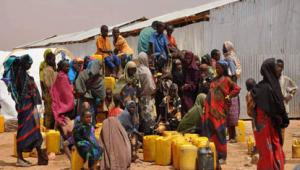By Nick Mann | 3 April 2013
Spending on development aid by Organisation for Economic Co-operation and Development countries fell by 4% in real terms last year, following a 2% reduction in 2011.
Figures published today reveal that the 25 members of the OECD’s Development Assistance Committee provided a total of $125.7bn in net Overseas Development Assistance in 2012 – equivalent to 0.29% of their combined gross national income. This compares with $133.7bn in 2011, equivalent to 0.31% of their GNI.
Since a peak in 2010, ODA has now fallen by 6% in real terms, with last year showing the biggest drop since 1997 (apart from in 2007, when exceptional debt relief operations in countries such as Iraq ended).
OECD secretary-general Angel Gurría said: ‘It is worrying that budgetary duress in our member countries has led to a second successive fall in total aid, but I take heart from the fact that, in spite of the crisis, nine countries still managed to increase their aid.’
The largest increases in net ODA last year were recorded by Australia (up 9.1%), Austria (up 6.1%), Iceland (up 5.7%), South Korea (up 17.6%) and Luxembourg (up 9.8%). The biggest donors by volume were the US, UK, Germany, France and Japan.
However, aid spending fell in real terms in 15 countries, with a particularly marked reduction among some of the 15 European Union countries that are members of the OECD’s DAC.
Between them, these EU states cut their aid spending by 7.3% last year, with the biggest reduction in the countries worst hit by the eurozone crisis. Spain slashed its aid budget by 49.7%, Italy’s was cut by 34.7% and Greece’s spending on aid went down by 17% as austerity measures took effect.
The OECD’s figures also reveal an above-average reduction in aid spending on the poorest countries. Bilateral net development aid to the 49 ‘Least developed countries’ fell by 12.8% in real terms last year, to around $26bn, while bilateral aid to sub-Saharan Africa fell by 7.9% in real terms compared with 2011.
Gurría stressed how important it was for donor countries to maintain their support for the poorest nations. ‘As we approach the 2015 deadline for achieving the Millennium Development Goals, I hope that the trend in aid away from the poorest countries will be reversed,’ he said. ‘This is essential if aid is to play its part in helping achieve the goals.’












